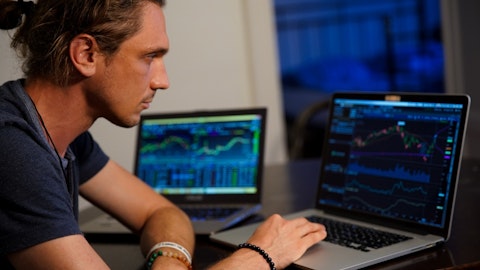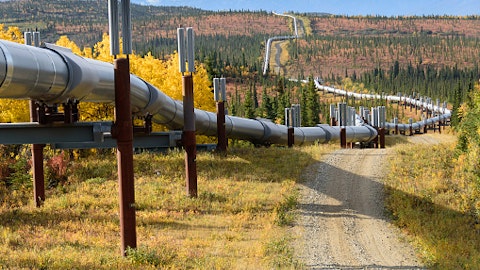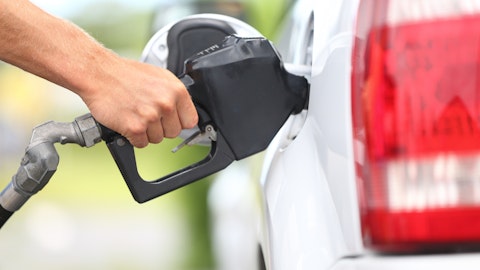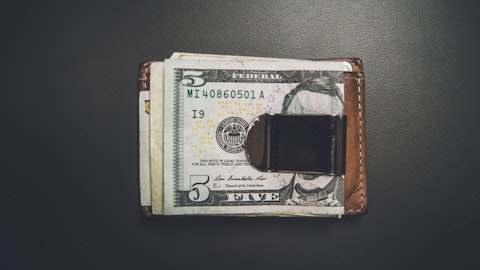As Joe said, we’re in a position to — with our announcement in 2024 to talk about another distribution increase. And I think as we sit here today, you should expect something at or above the 2% that we announced earlier this year.
Spiro Dounis: Helpful, thanks for that, Scott. Second question, maybe just on Peerless, just curious if you guys can update us any potential opportunities coming out of that asset. I think you’ve owned it for almost a year now, and it sounds like you’re pretty excited about what you’d be able to sort of string out of there under your new ownership. So one, any update there? And as we think about the size and magnitude, whether it be CapEx or EBITDA contribution, how should we be thinking about that?
Karl Fails: Yes. Spiro, this is Karl. That asset was, call it, roughly somewhere in the 10 to low teen EBITDA when we purchased it. And we’ve already been able to increase that really through deploying working capital, optimizing our supply, spending some capital. We’ve introduced the Sunoco brand to the island. So we’re very happy with the results we’ve achieved and what the team down there has done with kind of our strategy and our balance sheet and our ability to deploy capital. From the overall company standpoint, even doubling that business down there isn’t super material, but we think it’s more an example of how we’re looking at continued growth as we go into new geographies that we’re not just going to live with an acquisition that we make that we’re going to use that as a base and a foundation for further growth.
So I don’t know that we have a growth plan I can share with you that’s going to materially change our profile in the Caribbean. But clearly, we’re going to continue to grow and look for opportunities, whether that be acquisitions or deploying — continuing to deploy growth capital.
Spiro Dounis: Got it. Helpful color guys. Thanks for the time.
Operator: [Operator Instructions] Our next question comes from John Royall with JPMorgan. Please proceed with your question.
John Royall: Hi, good morning. Thanks for taking my questions. So my first question is you started the year with a $0.12 view on fuel margin. and you’re tracking much closer to $0.13 now and maybe a little bit ticking down in 4Q. But your commentary at the time when you put out the guidance was understandably about the relationship between margin and volume. If you were higher on margin, you’d probably be lower on volume. And clearly, you’re a good amount higher on both. So my question is just high level. What do you think has led to the better-than-expected environment in margin? And how much of it do you think is sustainable such that maybe we should expect sort of closer to a $0.13 level going forward, for example?
Karl Fails: Yes, John, thanks for the question. It’s definitely something that we think about and I think is worth highlighting on our results. So going back to last year, when we put our guidance together, we did do, as you said, link the volume and margins together and said, hey, let’s really look at gross profit. And then we said for each individual component of that, we said, hey, we think this is the fat part of the curve. And as we fast forward to where we are today, I think that relationship continues. But if you go down a level, I think it’s insightful to — it kind of adds to a comment that Joe made in his prepared remarks about select companies being able to take advantage of certain market conditions. So the relationship between volume and margin really is a market-related phenomenon, right, where if volumes are flat to declining, that’s going to provide support for higher breakeven margins and then things like inflation or supply chain problems or some of the things we’ve seen over the last few years contribute to that higher breakeven margin.



